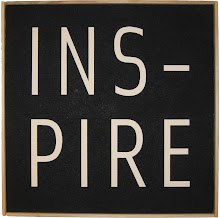
NOT IN ALPHABETIC ORDER...Aaron Rose, Adam Hayes, Alexis Saile, Alexis Zavialoff, Amigos Koike, Andrea Heller, Andreas Banderas, Andrew Jeffrey Wright, Andro Wekua, Anja Kirschner, Annelise Coste, Anthony Record, Ari Marcopoulos, Bastien Aubry, Beau LaBute, Beni Bischof, Bruno Peinado, Catalina TM, Chris Johanson, Chris Lindig, Christian Andersen, Cody Hudson, Daniel Johnston, David Chieppo, David Shrigley, Dimitri Broquard, Dylan Martorell, Ed Templeton, Eddie Martinez, Fergus Purcell, Florencio Zavala, Francis Upritchard, Frédéric Fleury, French, Gabi Berüter, Gareth Bayliss, Geoff McFetridge, Georg Gatsas, Grrrr, Guy Meldem, Harmony Korine, Hendrik Hegray, Henry Roy, Himaa, Holly Stevenson, Jaret Penner, Jason McLean, Jay Nelson, Jo Jackson, Jockum Nordström, Jody Barton, Jonas Delaborde, Josh Petherick, Katerina Christidi, Keegan McHargue, Kevin Lyons, Kim Bennett, Kim Gordon, Kim Hiorthøy, Körner Union, Kuniko Nagasaki, Kyle Field, Larry Clark, Laura Owens, Leah Singer, Linus Bill, Lizzie Finn, Lorenzo Petrantoni, Marcus Oakley, Mari Eastman, Matt Leines, Matt Lock, Matthew Chapman, Marcel Dzama, Mark DeLong, Masumi Yamauchi, Maya Hayuk, Mehdi Hercberg, Michael Dumontier, Michael Günzburger, Mike Mills, Nakako Hayashi, Nathan Gray, Neil Farber, Nick Haymes, Nicola Pecoraro, Nicole Bachmann, Oliver Grajewski, Paul Davis, Perks and Mini, Peter Piller, Peter Sutherland, Reala, Rick Myers, Rita Ackermann, Robin Cameron, Rockmaster K., Ryoko Aoki, Samuel Nyholm, Scott Barry, Spike Jonze, Stefan Marx, Susan Cianciolo, Susanna Howe, Takashi Homma, Tal R, Talia Keinan, Tanja Helena Roscic, Taro Hirano, Taylor McKimens, The Changes, Thurston Moore, Tim Barber, Tobin Yelland, Tucker Nichols, Warja Lavater, Wesley Willis, Yoshimi, Yuka Katagiri and Yukari Miyagi
Taken from 100+ Nieves Zines at Printed Matter in New York last April 4th – May 23rd, 2009. Missed that one. Thanks FFFound.




























